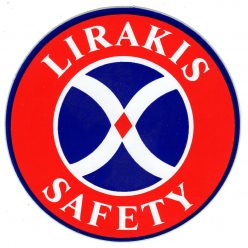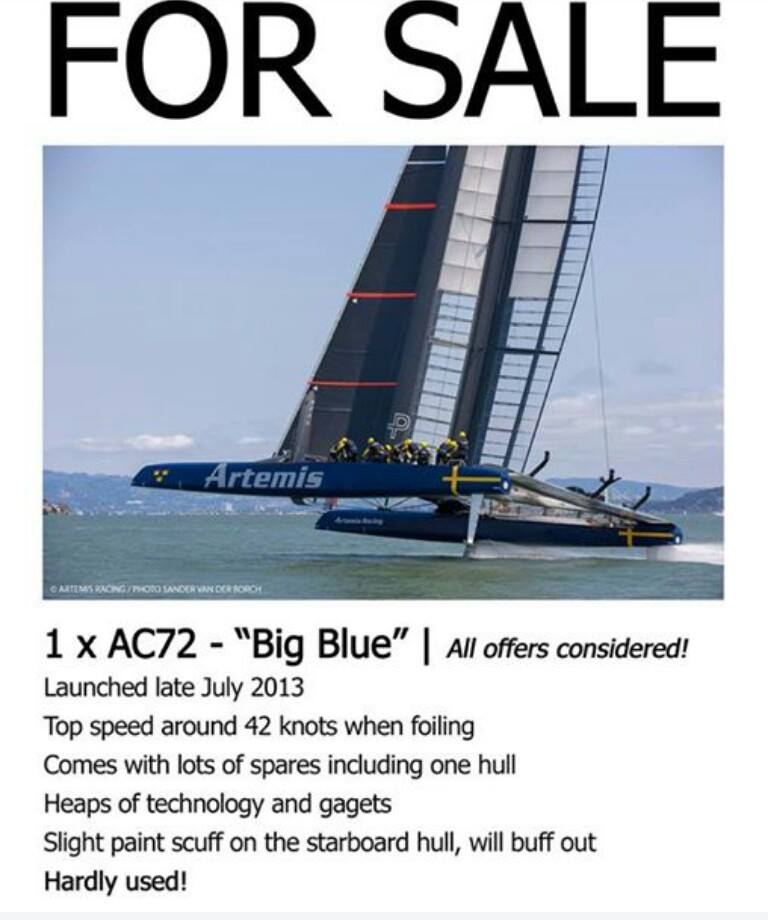By Therese Poletti, MarketWatch

Getty Images
Oracle Team USA passes the Golden Gate Bridge while training for September’s America’s Cup regatta on Aug. 7.
SAN FRANCISCO (MarketWatch) — In February 2010, a jubilant Larry Ellison and San Francisco Mayor Gavin Newsom stood together at City Hall to celebrate Ellison’s team winning the coveted America’s Cup, the oldest trophy in sailing.
Ellison, co-founder and chief executive of Oracle Corp. ORCL +0.24% , predicted — if he and his team were to pick San Francisco as host for the next America’s Cup — that the races would bring over $1 billion in revenue to the city, which was then still hurting from the Great Recession, about three times the economic windfall of the Super Bowl, which is coming to the Bay Area in 2016.
The current regatta, with three teams racing in the Louis Vuitton Cup, began in July with round robins, and continues with semifinals now until Aug. 30. The winner goes to the finals, which start Sept. 7, against the defending champion, Team Oracle USA. The final races could run until Sept. 21, if necessary. With so many months of sailing, the city would benefit from the visiting teams and spectators, with an estimated 2 million visitors spending money here on lodging, food, and sites.
In addition, the beauty of San Francisco Bay and its late afternoon high winds would lend itself to picture-perfect, made-for-TV races. The races of the huge colorful catamarans are taking place far closer to shore, as opposed to the America’s Cups of the past that typically take place in the ocean, far from most spectators.
Italy’s Luna Rossa Challenge (L) and Sweden’s Artemis Racing (R) face off at the start of a semifinals match on Aug. 7.
But so far, the America’s Cup is shaping up to be less of an economic boon than predicted. What’s more, the cup has been a sporting disappointment, an event fraught with fighting, lawsuits, accidents and the tragic death of a well-regarded British sailor, Andrew ”Bart” Simpson in May, who was pinned under the Artemis Racing team’s capsized catamaran, during practice races.
From the beginning, the trials set the tone.On July 7 Emirates Team New Zealand sailed the course alone, and Italy’s Luna Rossa sat out in protest, while an international jury was deciding whether to enforce new safety rules imposed by the regatta director after the tragedy.
Leading up to the finals in September, the semifinals have begun this month and plenty of tickets are still available to watch from the various spectator venues, at different price ranges, from $35 up to tens of thousands for a yacht berth. Local media has had a field day, where the alternative paper, SFWeekly, has called it a “fiasco” and in February, city supervisor John Avalos told the paper that the city’s Board of Supervisors “were f-ing played,” by the America’s Cup organizing committee.
Billionaire’s bust?
What went wrong? Is this America’s Cup an example of too much money and too much technology? The races feature the fastest boats yet, with 72-foot-long hulls, and masts — some made of expensive carbon fiber — about 131 feet high, with the average price tag to build them about $100 million a boat.
These massive catamarans are also tech-laden, and at least in Oracle Team USA’s case, powered with specially designed software, a mesh network of sensors, on-board computers, GPS, and a WiFi network.
Will fans accept Beyonce’s new ‘do?
Beyonce’s new short hairdo that she posted on Instagram set the online world on fire. Her new look might prevent some hair-related accidents.
One of the biggest issues most frequently cited in the ho-hum races so far, is the fact that there are only four teams, or syndicates.
“Historically, you would have expected more than 10,” said Sean Randolph, president and CEO of BayArea Council Economic Institute, which co-authored one of the big economic impact studies of the America’s Cup. “Ten to 12 would have been more of a normal size. You have fewer boats, and they are spending less.”
The four teams are all well-heeled and spent years getting sponsorship or are funded by billionaires like the defender Ellison. For example, Sweden’s Artemis Racing is chaired by Torbjörn Törnqvist, co-founder of the trading firm Gunvor Group.
“Timing was one factor,” Randolf said, adding that the economic recession came when many teams would have been starting to make plans to enter. “The other is that these are extremely expensive boats to build and operate, compared to the traditional model haul boats. The tech is exotic, they are fantastic, but they are very expensive to build, operate and maintain.”
Current estimates by the BayArea Council now predict that the America’s Cup teams, visiting tourists, spectators and other factors will bring about $900 million in revenue versus $1.4 billion previously forecast. But the city has to pay for police and transportation costs. A fundraising effort has already raised $16 million to help cover the city’s cost.
In 2011, Aaron Peskin, the former president of the city’s board of supervisors, sued the board of supervisors to pressure for an environmental review of the sites being used. A settlement was reached in 2012, and one result was that the city dropped its long-term leases of nine city piers to the America’s Cup organizers. Peskin also created a petition on Causes.com, asking for Ellison to cough up the funds the city would be need to cover police and transportation costs.
“The good news is that because no one is actually showing up, their costs are going down,” said Peskin, who lives on Telegraph Hill where he has a view of the festivities down at Pier 27. “This whole thing was predicated on somewhere between 12 and 15 teams from around the world.. It turned out to be three and Oracle, which is as exciting as watching paint dry.”
A few weeks ago, Avalos called up Peskin and asked him to go outside and see how many people were attending a race. “I went out there with some binoculars,” he said. “I said, ‘Do you want me to count them for you?’ There were maybe 100 people.”
Jane Sullivan, a spokeswoman for the city at the America’s Cup, said that as attendance projections have fallen to about 2 million visitors to the cup, versus 2.9 million previously, so have the city’s costs, originally estimated at $32 million. “We see the fundraising and the city’s costs getting very close together,” she said. In general, she said “we are very pleased that the city is filled with visitors.” She added that the city has done major improvements, just like many do getting ready for a big party, which will remain after the cup is over.
“The view of the city that is being beamed around the world, as an ad for San Francisco, you could not ask for anything better,” Sullivan said. “That is almost un-quantifiable.”
As the semifinals get started this month, economist Randolf and some of his researchers will interview visitors to get a sense of how much they are spending in the city, how long they are staying and other data.
“It’s still very much in play. I would sum it up we know the economic impact will be less than it was originally projected,” he said. Is the America’s Cup going to be a billionaire’s bust? “It’s too early to go there,” Randolph cautioned. “It’s quite correct to point to the things that haven’t gone as expected.”
That may turn out to be the understatement of the year, but it’s not over until the fastest boat wins.







